Dry Rot: Causes, Consequences, and Repairs
By AJ Fagan, Superintendent | October 11, 2024
Dry rot, despite its name, is a form of wood decay that thrives in damp environments. Caused by specific fungi, dry rot can severely compromise the structural integrity of wood, making it a common concern in homes, especially in areas with higher humidity or frequent rainfall. Left unchecked, dry rot can lead to extensive and costly damage, which makes understanding it essential for any homeowner.
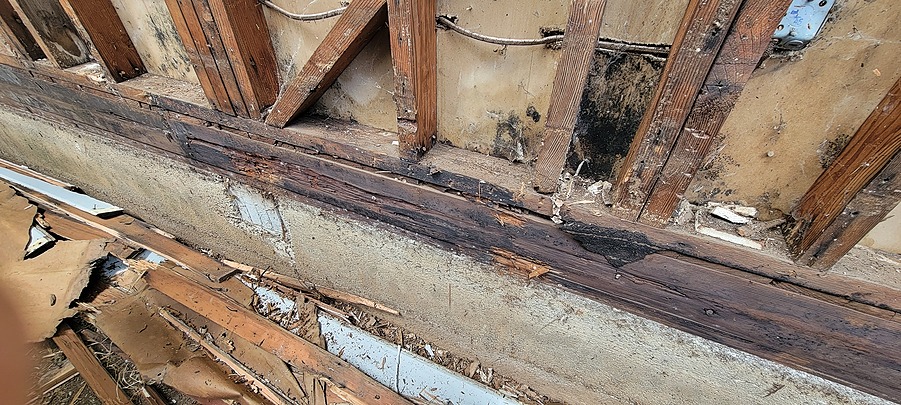
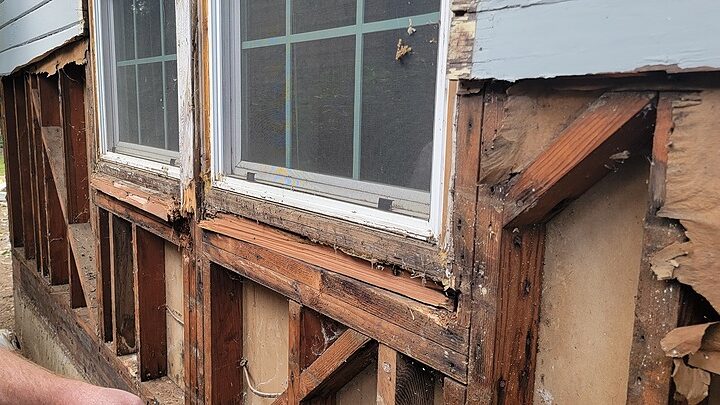
What is Dry Rot?
Dry rot occurs when one or more of various types of fungus begin to break down and consume wood fibers that have been exposed to moisture. These fungi need a moist environment to flourish, generally thriving in areas where there is constant moisture and high humidity levels. Once established, these fungus grow and spread quickly throughout wood members of a structure and can then spread outside of the original point of entry.
Signs of dry rot include:
- Brittle, cracking wood that may crumble or flake.
- Discoloration, typically yellow or brown, with a dry or powdery texture.
- A musty, damp odor near the affected areas.
- Fine, silky, white strands or a cotton-like growth on or near the wood.
- Even crumbling structural members in long term cases.
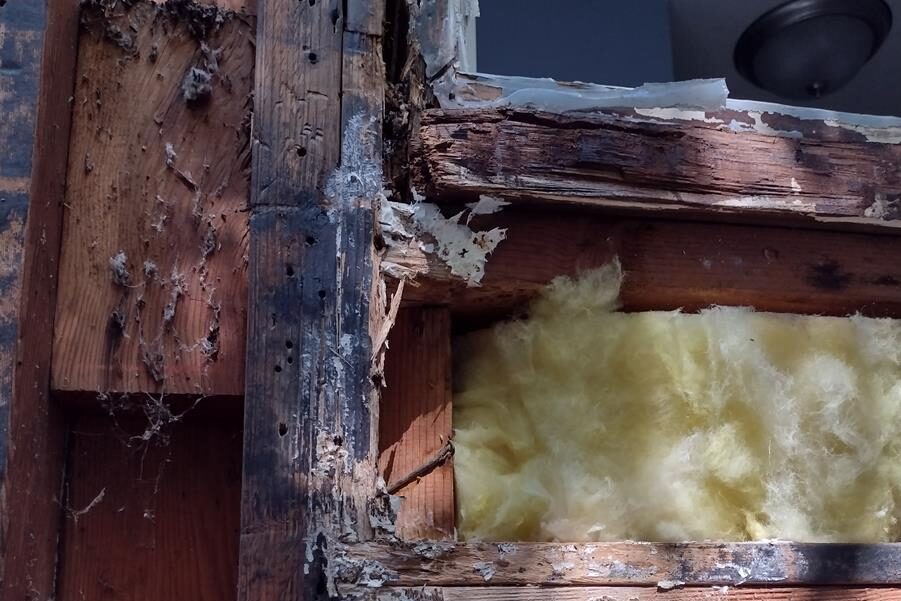
Consequences of Unaddressed Dry Rot
If left untreated, dry rot can cause serious structural damage. Since it eats away at the wood, it weakens the integrity of beams, floor joists, and even the foundational supports of a building. This can lead to:
- Structural Instability: As dry rot compromises the wood’s strength, affected areas may begin to sag or collapse, posing risks to safety and requiring extensive repairs.
- Increased Repair Costs: Dry rot spreads quickly, and the longer it’s left unchecked, the more widespread the damage becomes. Early detection can save on repair costs, as minor repairs are far less costly than large-scale restoration.
- Health Hazards: While dry rot itself isn’t directly harmful to humans, the mold and mildew that often accompany it can contribute to respiratory issues, particularly in individuals with allergies or asthma.
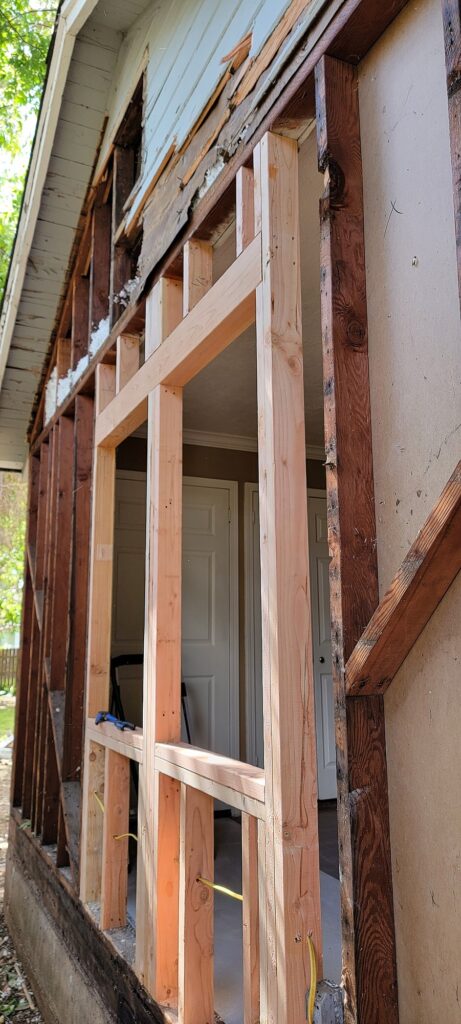
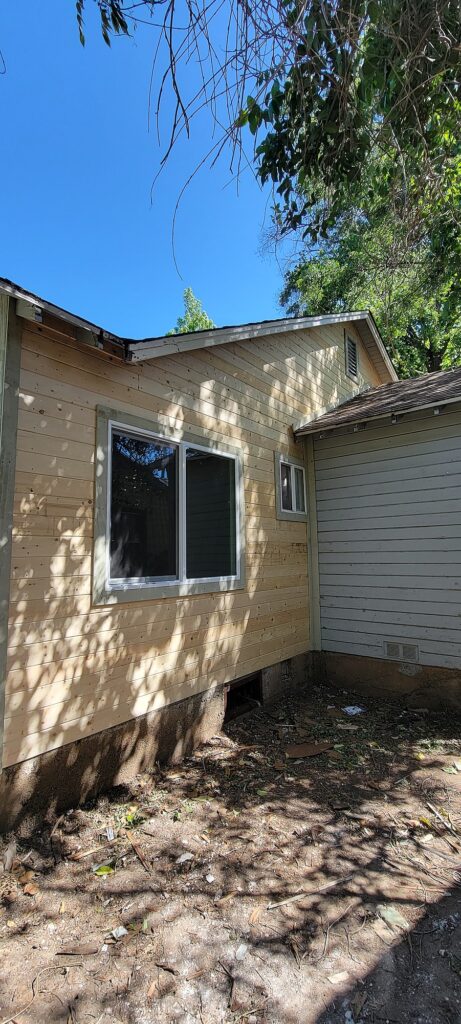
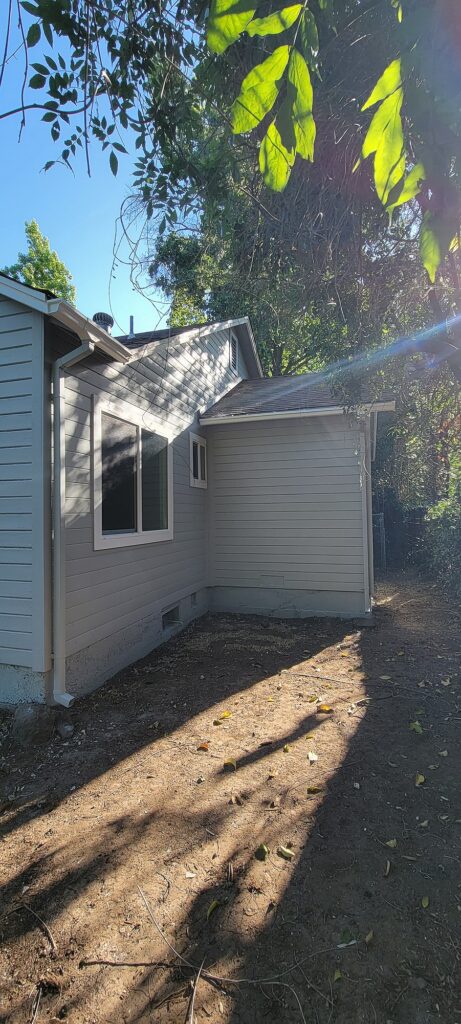
How to Repair Dry Rot
Repairing dry rot involves a few key steps:
- Identify and Eliminate Moisture: This is the key point that is often overlooked. I have seen many homes where “dry rot repairs” were made but have returned. In reality the issue was not truly repaired. It had a cosmetic fix that did not provide a solution as to how water was getting in the area. Dry rot repairs start by identifying the source of moisture and addressing it to prevent future rot. This may include fixing leaks, improving ventilation, or sealing areas that are prone to water intrusion. This often means resetting or replacing a window, door, or other fixed entry point. It may also mean repairing or resetting gutters and even correcting roofing problems.
- Remove and Replace Affected Wood: All infected wood must be removed. Depending on the severity of the damage, this can range from scraping away superficial layers to replacing entire sections of wood. For smaller repairs, an epoxy wood filler may be sufficient, but for larger sections, replacing with pressure-treated wood is often the best choice with careful attention to seal all joints and use wood preservative treatments where applicable to protect against future decay. Using a chisel or saw, cut back to where the wood is solid and uninfected. Our practice is to replace full boards rather than patch in repairs. However, any of these approaches can be effective at correcting the issue.
Questions to Ask a Contractor
When seeking a contractor for dry rot repairs, asking the right questions can ensure you choose someone qualified for the job. Here are some key questions to consider:
- What Experience Do You Have with Dry Rot Repairs?
Dry rot requires specialized knowledge, so you’ll want a contractor who has experience in identifying and treating it effectively. - What Is Your Process for Identifying the Extent of the Damage?
An experienced contractor should be able to explain how they assess the full extent of the dry rot and provide you with a bid to make these repairs. If framing issues are exposed after siding or other materials are removed, additional costs may be incurred. Any good contractor should immediately alert you to these problems and provide you with a best course of action to deal with the problems as well as alert you to additional costs that will be incurred. - How Do You Plan to Address the Root Cause of the Moisture?
Simply replacing the wood won’t solve the issue if the underlying moisture problem isn’t resolved. Ask what steps they’ll take to eliminate or mitigate moisture sources.
By asking these questions and understanding the repair process, you can make informed decisions about addressing dry rot and protecting the structural integrity of your home.
